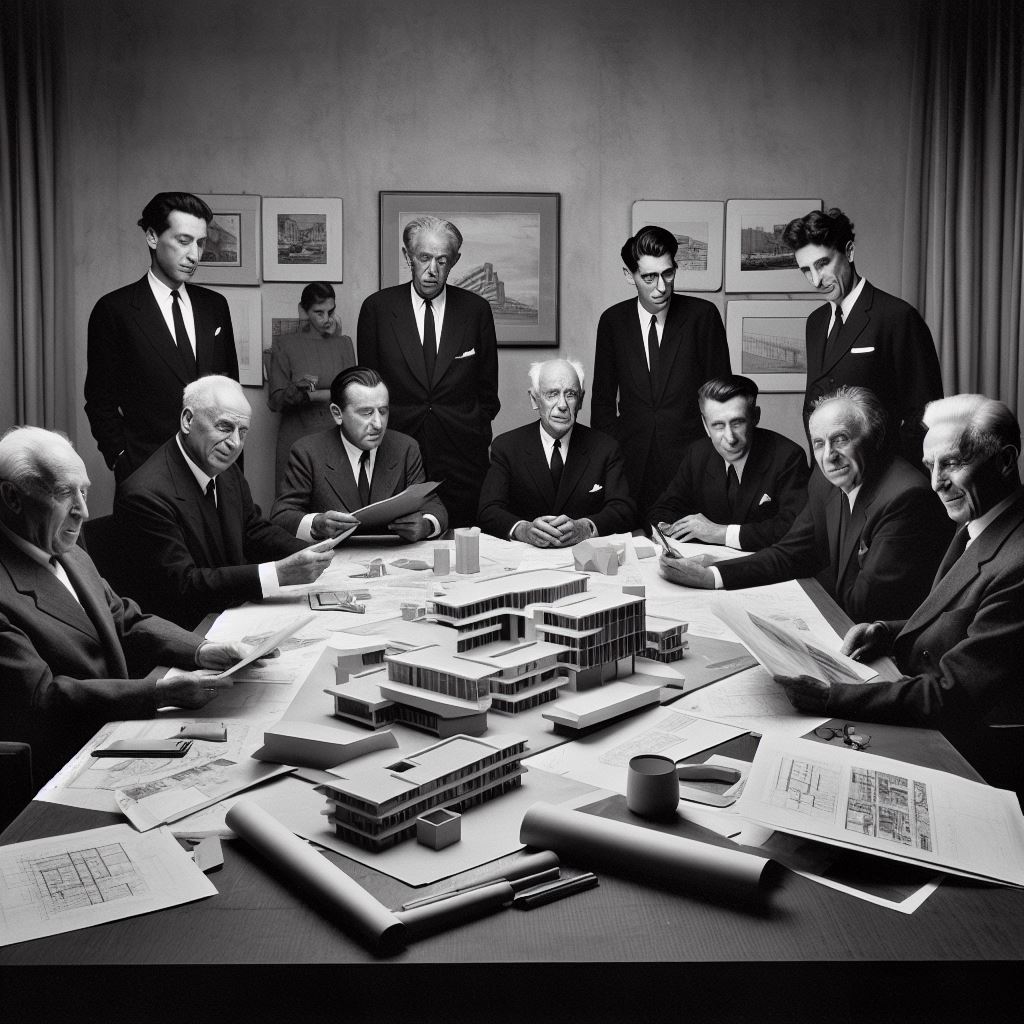Introduction
In the vast landscape of Canadian architecture, there are many eminent architects who have left their indelible mark.
From awe-inspiring public buildings to innovative residential designs, these architects have played a crucial role in shaping the architectural scene in Canada.
This blog post aims to shed light on the notable works of famous Canadian architects and their contributions to the field of architecture in the country.
By showcasing their distinctive projects and innovative designs, we aim to honor their achievements and inspire budding architects.
Through this exploration of their works, we can better appreciate the significant influence these architects have had on the built environment and the rich architectural heritage of Canada.
Join us as we dive into the world of renowned Canadian architects and discover their extraordinary creations.
Architect 1: Frank Gehry
Frank Gehry is a renowned Canadian architect known for his innovative designs and use of unconventional materials.
Brief background of Frank Gehry and his Canadian connection
Born in Toronto in 1929, Gehry initially studied at the University of Southern California before moving to Harvard Graduate School of Design where he developed his signature style.
Gehry’s Canadian connection is evident in his early projects, such as the renovation of his grandparents’ house in Toronto.
This project allowed him to experiment with materials and forms, setting the foundation for his groundbreaking career.
One of Gehry’s most iconic works is the Art Gallery of Ontario in Toronto. Completed in 2008, the building’s design seamlessly blends new construction with the historic structure, creating a striking visual contrast.
The use of glass and steel gives the museum a modern and futuristic feel, while the incorporation of wood elements pays homage to traditional Canadian craftsmanship.
Another masterpiece by Gehry is the Guggenheim Museum in Bilbao, Spain.
This architectural marvel has become a symbol of Bilbao’s transformation into a cultural hub.
The museum’s curved and undulating titanium facade reflects light and changes color throughout the day, creating a constantly shifting visual experience.
Inside, the museum features a vast atrium and gallery spaces that showcase contemporary art.
Gehry’s architectural style is characterized by his use of bold and unconventional shapes.
He often incorporates asymmetry, fragmented forms, and deconstructive elements into his designs, challenging traditional architectural norms.
His buildings stand out in their surroundings, creating a sense of excitement and curiosity.
One of Gehry’s distinctive traits is his ability to transform seemingly ordinary materials into extraordinary architectural elements.
He is known for using materials like titanium, stainless steel, and glass in innovative ways, pushing the boundaries of what is possible in construction.
His use of these materials adds an element of surprise and innovation to his designs.
Gehry’s work has received widespread acclaim and numerous awards.
Unique architectural style and use of unconventional materials
His unique vision and groundbreaking designs have made him one of the most influential architects of our time.
He has left an indelible mark on the architectural landscape, inspiring a new generation of architects to think outside the traditional boundaries.
In short, Frank Gehry’s Canadian background has played a significant role in shaping his architectural career.
Some of his iconic works
His iconic works, such as the Art Gallery of Ontario and the Guggenheim Museum in Bilbao, showcase his innovative style and use of unconventional materials.
Gehry’s ability to push the boundaries of design and his unique architectural vision have solidified his status as a world-renowned architect.
Read: Becoming an Architect in Canada: A Guide
Architect 2: Arthur Erickson
Arthur Erickson was a renowned Canadian architect, known for his unique approach to architecture and his significant impact on the Canadian architectural scene.
Erickson’s Background and Impact on Canadian Architecture
Born in Vancouver, British Columbia in 1924, Arthur Erickson developed a love for architecture from an early age and went on to study at the renowned McGill University in Montreal.
After completing his studies, he traveled extensively and was deeply influenced by various architectural styles and cultures, which shaped his distinctive design philosophy.
Erickson’s impact on Canadian architecture can be seen in his contributions to the field as a teacher, writer, and designer.
He played a crucial role in shaping the landscape of Vancouver and other Canadian cities through his innovative designs and emphasis on blending architecture with its natural surroundings.
Notable Works
One of Erickson’s most famous works is the Robson Square in Vancouver, British Columbia.
Completed in 1983, this iconic building complex comprises of a courthouse, government offices, and an outdoor plaza.
It is admired for its innovative design that seamlessly integrates with the surrounding urban environment.
Another significant project by Erickson is the Canadian Embassy in Washington, D.C.
This architectural marvel, completed in 1989, showcases Erickson’s ability to blend modern design with elements inspired by the Canadian landscape.
The building’s limestone façade, geometric shapes, and floating glass roof represent his unique architectural style.
Fascination with Light and Environment
What sets Erickson apart from other architects is his fascination with light and the natural environment.
He believed that a well-designed building should not only serve its purpose but also interact harmoniously with its surroundings.
Erickson often incorporated large windows and skylights to maximize natural light and create a connection between the interior and exterior spaces.
Erickson’s ability to seamlessly integrate his designs with the natural environment is evident in projects like the Museum of Anthropology at the University of British Columbia.
With its extensive use of glass, concrete, and wood, the museum’s architecture beautifully showcases native art while embracing the surrounding forest and ocean views.
In fact, Arthur Erickson was a visionary architect who left an indelible mark on the Canadian architectural landscape.
Through his notable works like Robson Square and the Canadian Embassy, he showcased his unique design philosophy that emphasized blending architecture with the environment.
Erickson’s legacy lies in his ability to create spaces that harmoniously interact with nature while featuring modern elements, leaving a lasting impact on Canadian architecture.
Read: Job Hunting Tips for Electrical Engineers in CA

Architect 3: Moshe Safdie
Moshe Safdie, a renowned architect, has made significant contributions to Canadian architecture.
Brief background of Moshe Safdie and his contributions to Canadian architecture
Born in Haifa, Israel, in 1938, Safdie studied at McGill University in Montreal.
After completing his studies, Safdie worked briefly with Louis Kahn, a prominent American architect.
Unlock Your Career Potential
Visualize a clear path to success with our tailored Career Consulting service. Personalized insights in just 1-3 days.
Get StartedOne of Safdie’s most famous works is Habitat 67, a housing complex located in Montreal.
Designed for the 1967 World Expo, Habitat 67 was intended to explore new ways of urban living.
It consists of prefabricated concrete modules stacked and interconnected to create unique living spaces.
Another notable project by Safdie is the National Gallery of Canada in Ottawa.
Completed in 1988, the building stands as an iconic symbol of Canadian culture.
Safdie’s design beautifully blends modern and traditional architectural elements, creating a harmonious space for art and culture.
Innovative approach to housing design and his emphasis on community interaction
Safdie’s innovative approach to housing design is one of his key contributions.
He believes that architecture should serve as a tool to improve society and enhance community interaction.
His designs focus on creating livable spaces that prioritize human needs and well-being.
In his work, Safdie integrates green spaces and communal areas, promoting social interaction among residents.
He believes that architecture has the power to foster a sense of belonging and unity.
This philosophy is evident in Habitat 67, where shared outdoor spaces connect the residents and encourage a sense of community.
Safdie’s emphasis on community interaction is also evident in his project called “Beyond Habitat.”
Inspired by the success of Habitat 67, Safdie designed a series of housing projects that aimed to create tight-knit communities.
These projects featured shared facilities and communal spaces, fostering a sense of belonging and collective identity.
Aside from his contributions to Canadian architecture, Safdie’s influence extends beyond national borders.
He has designed numerous iconic structures around the world, including the Marina Bay Sands complex in Singapore and the Yad Vashem Holocaust History Museum in Jerusalem.
Throughout his career, Safdie has received numerous awards and recognition for his exceptional architectural achievements.
He continues to challenge conventional design principles and push the boundaries of innovation.
Basically, Moshe Safdie has made a significant impact on Canadian architecture through his iconic works such as Habitat 67 and the National Gallery of Canada.
His innovative approach to housing design and emphasis on community interaction have reshaped the way we think about urban living.
Safdie’s contributions extend beyond Canada, making him a truly global architect.
Read: Navigating Electrical Engineering Internships
Architect 4: Douglas Cardinal
Douglas Cardinal is a renowned Canadian architect who has made significant contributions to the Canadian architectural scene.
His impact cannot be overstated, as he has left an indelible mark on the field with his innovative designs and unique approach.
Brief background of Douglas Cardinal and his impact on Canadian architectural scene
Cardinal was born in Calgary, Alberta, in 1934, and he is of Blackfoot and Métis descent.
His indigenous heritage played a vital role in shaping his architectural vision and philosophy.
Cardinal graduated from the University of British Columbia with a Bachelor of Architecture degree in 1958.
He then pursued further studies at the University of Texas, where he obtained a Master of Architecture degree in 1963.
Cardinal’s notable works include the Canadian Museum of History in Gatineau.
This iconic building, completed in 1989, showcases his groundbreaking design philosophy and incorporates indigenous elements.
The museum’s structure, resembling a massive canoe, blends seamlessly with the surrounding landscape.
Cardinal’s commitment to preserving and honoring indigenous culture is evident in his design.
Another remarkable work by Cardinal is the National Museum of the American Indian in Washington, D.C.
This architectural masterpiece, completed in 2004, celebrates Native American heritage and culture.
The building’s organic forms and use of natural materials pay homage to the land and traditions of the Native American people.
Cardinal’s sensitive approach to indigenous architecture sets him apart from his contemporaries.
He believes in creating spaces that reflect the cultural identity of the people they serve.
Cardinal’s designs often incorporate cultural symbolism, such as traditional patterns and motifs.
These symbols not only add aesthetic value to his buildings but also serve as a means of cultural expression.
Indigenous architecture and his incorporation of cultural symbolism in his designs
His focus on indigenous architecture has inspired a new generation of architects to embrace their cultural heritage.
Cardinal’s innovative and socially conscious approach to design has earned him numerous accolades throughout his career.
He has received awards such as the Governor General’s Medal in Architecture and the Order of Canada.
Cardinal’s influence extends beyond Canada, as his work has been recognized and celebrated on an international stage.
His architectural vision continues to inspire and challenge the conventions of the field.
Generally, Douglas Cardinal is a visionary architect whose impact on the Canadian architectural scene cannot be overstated.
His focus on indigenous architecture and incorporation of cultural symbolism in his designs have redefined the field.
Through his notable works, such as the Canadian Museum of History and the National Museum of the American Indian, Cardinal has left an enduring legacy.
Read: Canadian Climate: Challenges for Electrical Eng
Conclusion
The famous Canadian architects and their works have played a crucial role in shaping the architectural landscape in Canada.
Their contributions have not only influenced the country’s aesthetics but have also gained global recognition.
These architects have designed iconic structures that have become landmarks, representing the cultural and historical significance of Canada.
Their works exhibit a diverse range of architectural styles, showcasing the richness and versatility of Canadian architecture.
By exploring these architectural marvels, readers can develop a deeper appreciation for the creativity, innovation, and craftsmanship displayed by these architects.
The buildings designed by these famous architects stand as testaments to Canada’s architectural prowess and serve as sources of inspiration for future generations.
It is important to recognize the significance of these architects and their works in promoting Canadian culture and identity.
Their designs have become symbols that represent the country’s history, values, and aspirations.
In summary, the works of these famous Canadian architects have left an indelible mark on the Canadian architectural landscape.
We encourage readers to explore these masterpieces firsthand and appreciate the diversity and excellence of Canadian architecture on an international scale.




